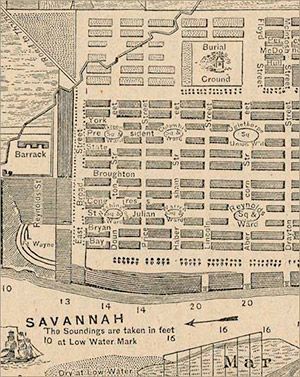Savannah’s recorded history begins in 1733. That’s the year General James Oglethorpe and the 120 passengers of the good ship “Anne” landed on a bluff high along the Savannah River in February. Oglethorpe named the 13th and final American colony “Georgia” after England’s King George II. Savannah became its first city.
The plan was to offer a new start for England’s working poor and to strengthen the colonies by increasing trade. The colony of Georgia was also chartered as a buffer zone for South Carolina, protecting it from the advance of the Spanish in Florida.
Under the original charter, individuals were free to worship as they pleased and rum, lawyers and slavery were forbidden — for a time.
Savannah’s Historic District was designated a National Historic Landmark in 1966. It is one of the largest historic landmarks in the country. Significant buildings that were saved and restored include:
- The Pirates’ House (1754), an inn mentioned in Robert Louis Stevenson’s book “Treasure Island”; the Herb House (1734), oldest building in Georgia; and the The Olde Pink House (1789), site of Georgia’s first bank.
- The birthplace of Juliette Gordon Low (completed in 1821), now owned and operated by the Girl Scouts of the U.S.A. as a memorial to their founder.
- The Telfair Academy of Arts and Sciences, built in 1812 as a mansion, was one of the South’s first public museums.
- Restored churches include: The Lutheran Church of the Ascension (1741); Independent Presbyterian Church (1890) and the Cathedral of St. John the Baptist (1876), one of the largest Roman Catholic churches in the South.
- The First African Baptist Church was established in 1788.
- Savannah’s Temple Mickeve Israel is the third oldest synagogue in America.
Learn more at SavannahVisit.com.

